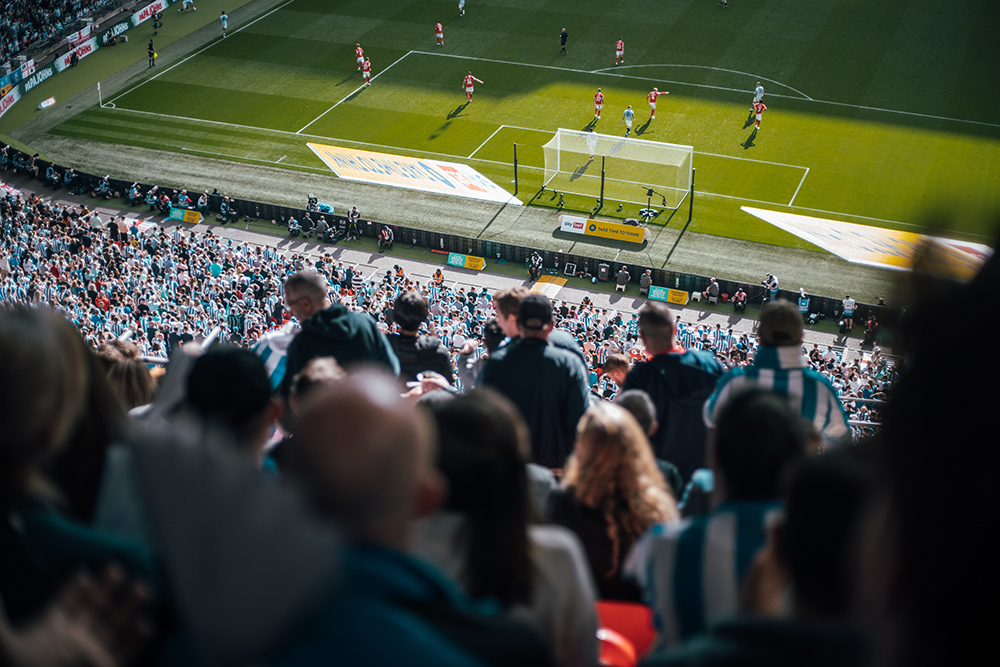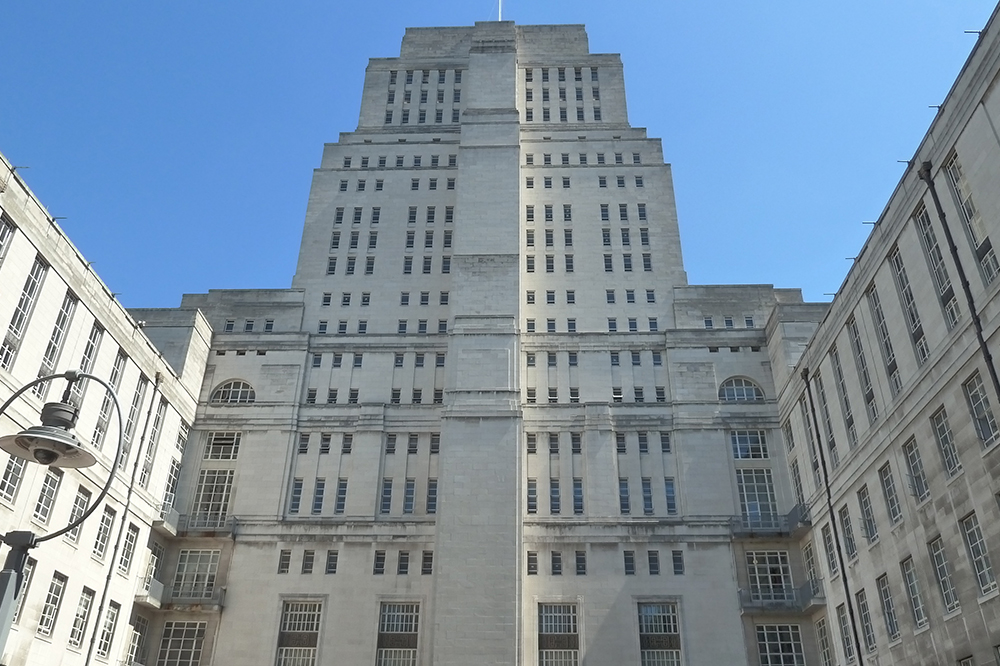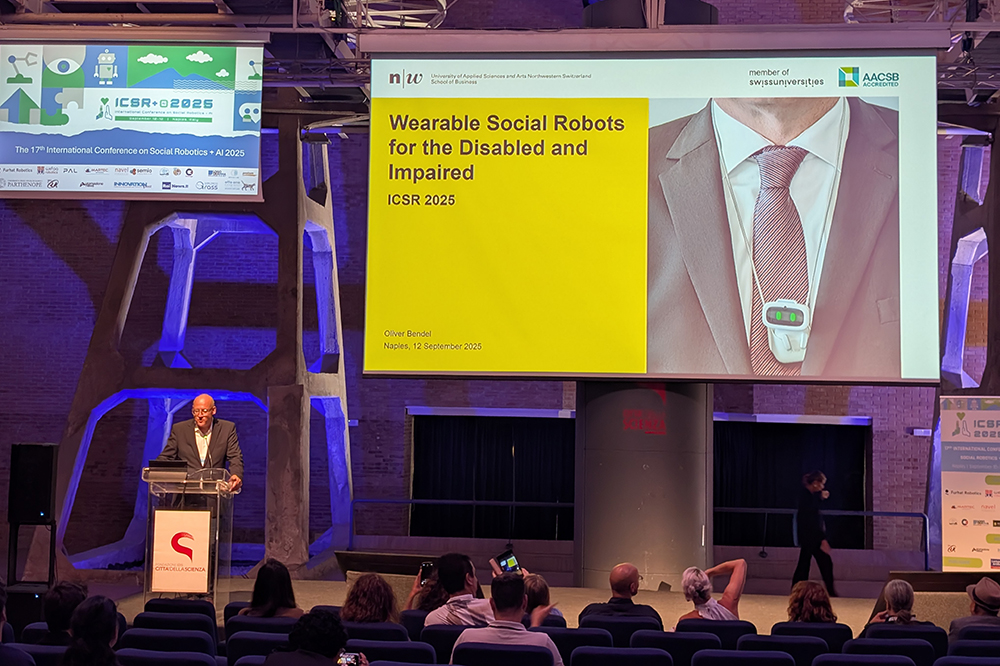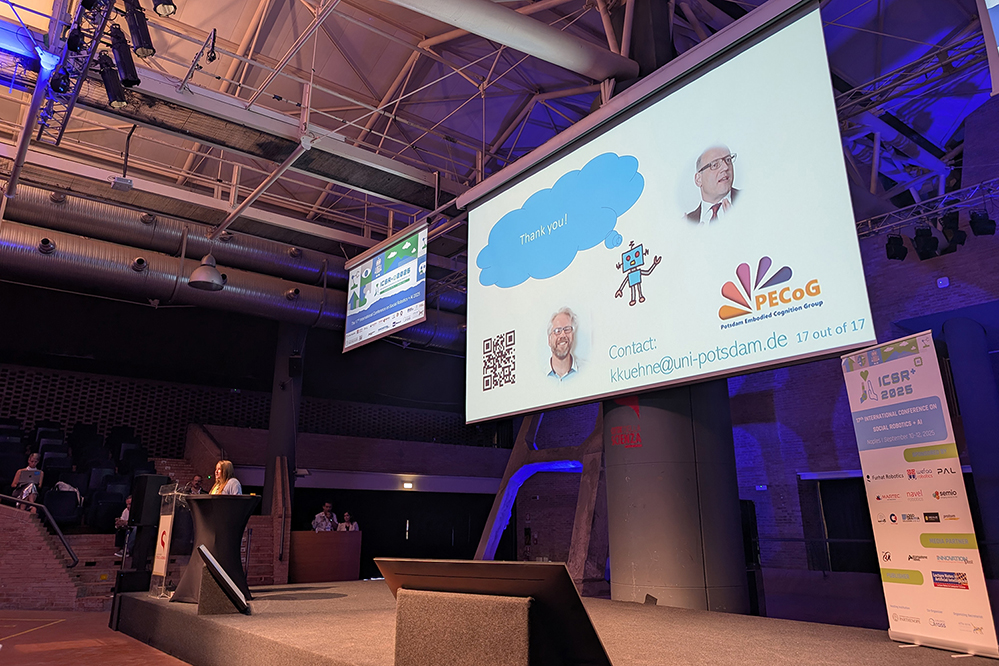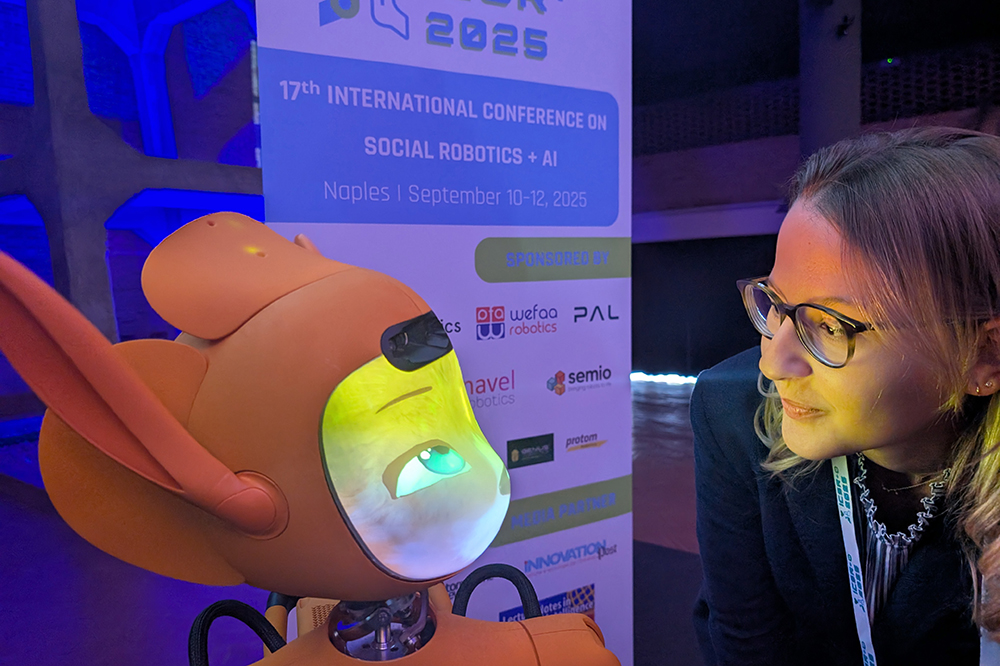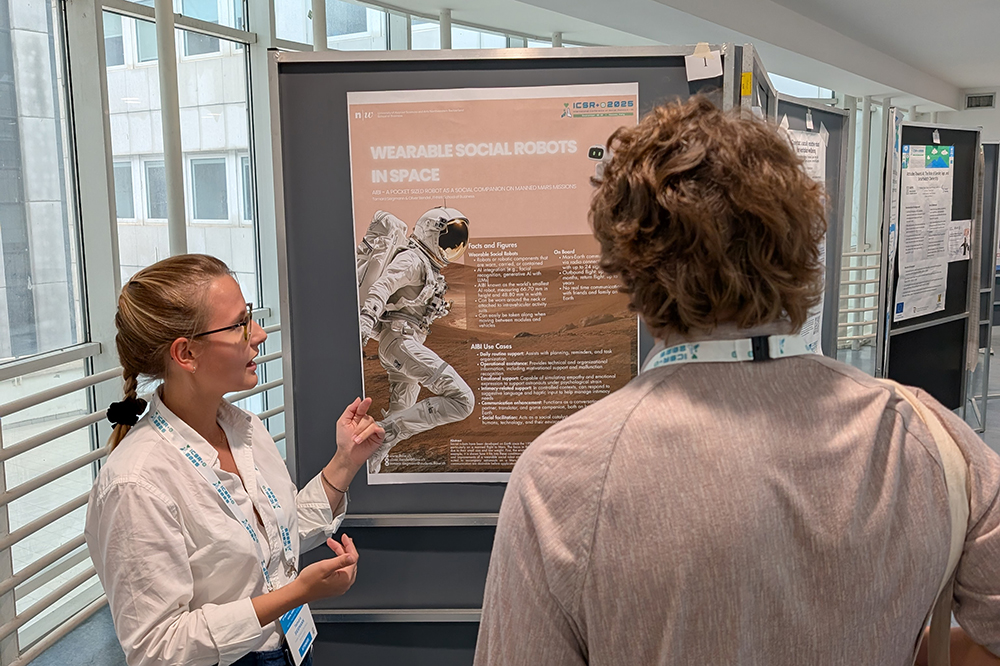The 18th International Conference on Social Robotics (ICSR + Art 2026) will take place in London, UK, from 1-4 July 2026. ICSR is the leading international forum that brings together researchers, academics, and industry professionals from across disciplines to advance the field of social robotics. As part of this edition, the ICSR 2026 Competition invites visionary concepts and prototypes for social robots that collaborate, care, and connect with people beyond the laboratory. Designers, engineers, artists, researchers, and pupils or students (school, college, and university) are invited to submit projects ranging from functional solutions to artistic or hybrid works. The competition features two categories: the Robot Design Competition, focusing on innovation in functionality, interaction, and application; and the Robot Art Competition, highlighting creative fusions of fashion, art, performance, and robotics. Hybrid projects may apply to both awards. Each entry must be described in a summary of up to two pages (preferably following Springer LNAI formatting), including an abstract of no more than 50 words and sufficient detail to judge novelty and impact. A single optional video link (maximum three minutes) and images or renderings are encouraged. Submissions should indicate whether they apply for the Design Award, the Art Award, or both, and be uploaded via the competition form at: icsr2026.uk/competition/. The competition submission deadline is 1 March 2026; finalists will be notified on 15 April 2026, and winners will be announced on 3 July 2026 during the closing ceremony of ICSR 2026.
Call for Workshops at ICSR
The 18th International Conference on Social Robotics (ICSR + Art 2026) will take place in London, UK, from 1-4 July 2026. ICSR is the leading international forum that brings together researchers, academics, and industry professionals from across disciplines to advance the field of social robotics. The conference is accepting workshop proposals until the workshop submission deadline. Approved workshops will be announced 2 weeks after the submission deadline. The deadline for submitting proposals for workshops is 1 December 2025. Further information is available at icsr2026.uk.
Call for Special Sessions at ICSR
The 18th International Conference on Social Robotics (ICSR + Art 2026) will take place in London, UK, from July 1–4, 2026. ICSR is the leading international forum that brings together researchers, academics, and industry professionals from across disciplines to advance the field of social robotics. The conference is accepting special session proposals on a rolling basis until the submission deadline. Approved sessions will be added here as they are confirmed. The deadline for submitting proposals for special sessions is 1 December 2025. Further information is available at icsr2026.uk. Two special sessions have already been accepted, namely “SS01: Cultural Robotics” and “SS02: Participatory Futures in Social Robotics and AI”.
ICSR + ART 2026 at Senate House
The 18th International Conference on Social Robotics (ICSR + Art 2026) will take place in London, UK, from July 1-4, 2026. ICSR is the leading international forum that brings together researchers, academics, and industry professionals from across disciplines to advance the field of social robotics. This year’s edition will be hosted at Senate House, part of the University of London, located in the heart of central London. The venue is within walking distance of many of the city’s main attractions and stations. Senate House has appeared in several famous films and series, including “Batman Begins”, “The Dark Knight Rises”, “Fast & Furious 6″, “No Time to Die” (a James Bond film), “Nineteen Eighty-Four”, and the Netflix series “The Crown”. The building inspired George Orwell’s depiction of the Ministry of Truth in “1984″. Further information is available at icsr2026.uk (Photo: Bastique/CC BY-SA 3.0).
ICSR + Art 2026 in London
Oliver Bendel on Wearable Social Robots
At the last session of the ICSR on September 12, 2025, Oliver Bendel presented his full paper titled “Wearable Social Robots for the Disabled and Impaired”. He began by defining the term wearable social robots, which he sees as a special form and combination of wearable robots and social robots. One example is AIBI, a small robot that he briefly wore around his neck during the talk. Wearable social robots can include functions for games and entertainment, information and learning, navigation and description, and combating loneliness and anxiety. Potential user groups include pupils and students, prison inmates, astronauts, and disabled and impaired persons. Franziska and Julia demonstrated in videos how they use AIBI as a companion and for social support. With this paper, Oliver Bendel continued his work in the field of inclusive AI and inclusive Robotics. The ICSR is one of the leading conferences for social robotics worldwide, and its 17th edition took place from September 10 to 12, 2025, in Naples, Italy. Mariacarla Staffa (University of Naples Parthenope, Italy), John-John Cabibihan (Qatar University, Qatar), and Bruno Siciliano (University of Naples Federico II) served as the main organizers. Over the course of the three days, 300 participants attended, contributing once again to the advancement of social robotics.
Small Talk with a Robot
At the last day of the ICSR on September 12, 2025, Katharina Kühne presented her full paper titled “Small Talk with a Robot Reduces Stress and Improves Mood” (written together with Antonia L. Z. Klöffel, Oliver Bendel, and Martin H. Fischer). Previous research has shown that social support reduces stress and improves mood. This study tested whether small talk with a social robot could be helpful. After performing a stressful task, 98 participants either chatted with a NAO robot, listened to the robot tell a neutral story, or did not interact with the robot. Both robot interactions reduced stress – particularly small talk, which also boosted positive mood. The effects were stronger in participants with high acute stress. Positive affect played a key role in stress reduction, suggesting that robot-mediated small talk may be a useful tool for providing emotional support. Dr. Katharina Kühne and Prof. Dr. Martin H. Fischer are researchers at the University of Potsdam. Antonia L. Z. Klöffel assists Katharina Kühne as a junior scientist. Martin Fischer is the head of the Potsdam Embodied Cognition Group (PECoG). Prof. Dr. Oliver Bendel is an associated researcher with PECoG.
Anouk Wipprecht at ICSR
On September 12, 2025, Dutch FashionTech designer Anouk Wipprecht gave a keynote speech entitled “The Intersection of Fashion, Robotics and Technology” at ICSR 2025 in Naples. In her presentation, she demonstrated how fashion can become an interactive experience that goes far beyond pure aesthetics by incorporating state-of-the-art technologies and scientific insights. With her designs, Wipprecht explores how clothing can transform not only our perception but also our relationship with the environment. A striking example of this is her Spider Dress, which uses integrated sensors and movable limbs to create a kind of technologically enhanced personal space. She collaborates with renowned partners such as Intel, Google, Microsoft, Samsung, Audi, and Swarovski, employing techniques like machine learning, biomimetic design, and microcontroller-driven animatronics. Her creations breathe, move, and respond to external stimuli – always with the aim of exploring new interfaces between humans and technology, and encouraging her generation to reflect on the future of the human body in digital space.
The Mirokaï
The third and final day of ICSR 2025, September 12, 2025, began with a keynote speech by Jérôme Monceaux entitled “Emotivation by Design: The Mirokaï”. Present was one of the Mirokaï, spectacular robots that roll on a sphere, the female Miroka. Jérôme Monceaux’s keynote traced the evolution of robotics toward more intuitive, inspiring, and joyful interactions. From the iconic Nao and Pepper robots at Aldebaran to the latest generation of social robots, The Mirokaï by Enchanted Tools, his innovative approach reshaped design, mobility, and user experience. He shared his vision for humanoid robots built to support people in everyday life and work. By combining bold engineering with endearing character design, embodied AI, and meaningful storytelling, Jérôme Monceaux and his team created a cohesive hardware and software ecosystem that integrated naturally into social environments – especially in care settings like senior living and pediatric hospitals. The approximately 300 participants watched enthusiastically as the inventor and visionary spoke to Miroka on stage and handed it a bubble flower, which it accepted and used.
About Robots in Space
On September 10, 2025, Tamara Siegmann and Oliver Bendel presented their short paper “Wearable Social Robots in Space” at the ICSR poster session. The ICSR is one of the leading conferences for social robotics worldwide. The 17th edition takes place from 10 to 12 September 2025 in Naples, Italy. The term “wearable social robots” was introduced by Oliver Bendel in his article “Wearable Robots” and in his full paper “Wearable Social Robots for the Disabled and Impaired” (both from 2025). These are social robots with features of wearables and wearable robots. One example is AIBI from LivingAI. Tamara Siegmann and Oliver Bendel, both from the FHNW School of Business, investigated possibilities for the use of wearable social robots in a Mars mission. They demonstrated that these are useful for daily routine support, operational assistance, intimacy-related support, communication enhancement, and social facilitation. This is the first study of its kind. However, reference could be made to several projects involving humanoid and social robots for space missions. The poster can be downloaded here.
